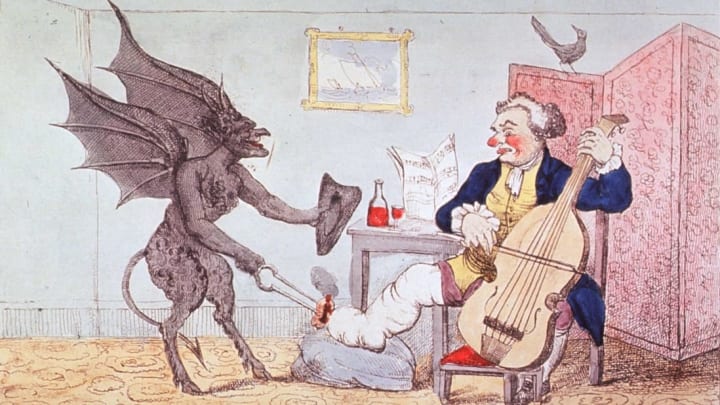Humanity spent the last century virtually eradicating some of the planet’s most unpleasant diseases. But some of them have started showing up again in increasing numbers of people. Here are eight diseases that, despite once being nearly eradicated, continue to infect people today.
1. Scarlet Fever
This deadly disease was first described in the 1500s. Due to its contagious nature and debilitating—if not deadly—effects, people greatly feared outbreaks of scarlet fever. Fans of the Little House on the Prairie series will remember it was scarlet fever that caused Mary’s blindness.
Penicillin proved an effective treatment for the disease, until recently. A sudden spike in scarlet fever cases in China, Hong Kong, and Macao in 2011 alerted scientists to a new, more virulent form of the disease. It was not just Asia that reported more cases—England saw an increase in cases in 2016, and in February 2020, a small outbreak caused a Michigan elementary school to close for a week
2. Rickets
Rickets was most common in industrialized cities during the 1800s. Children who worked in factories had poor diets and got little sunlight, which resulted in a Vitamin D deficiency. This can lead to bone problems, bowed legs, and stunted growth. As child labor laws limited kids’ time trapped inside and nutrition largely improved, rickets all but disappeared.
For almost a century, rickets was perceived as a disease that was “taken care of.” But in recent decades, case numbers have increased. Poor diets and hours spent indoors aren’t fully to blame. Rickets is a particular concern for breastfed infants, as breast milk doesn’t contain an adequate amount of vitamin D. According to the CDC, it’s rare for breastfeeding infants to get the disease, but it’s still important to supplement their diet with additional vitamin D.
3. Gout
The first documented case of gout was in Egypt in 2600 BCE. Though anyone could get it, gout was known as “the king’s disease” because symptoms most often presented themselves in royalty and the wealthy—Henry VIII and George IV both suffered from it. There was no cure, and once someone had one attack of gout, they were likely to get it again. The main symptom was unbelievably excruciating pain in a joint, usually the big toe. Attacks could last up to a week, made walking almost impossible, and even the weight of a light blanket typically put too much pressure on the joint.
The number of people suffering from gout in the U.S. has almost doubled in the last 50 years, and the numbers are expected to keep rising. Today, more than 8 million Americans have the disease. A diet of fatty meat, alcohol, and sugary drinks increases the risk of gout, as does age.
4. Syphilis
This sexually transmitted disease first appeared in Italy in 1494. The date and location have led many historians to conclude it came to Europe from the Americas. For more than 400 years, the disease was completely untreatable and became an epidemic in some areas. Vincent van Gogh’s brother, Winston Churchill’s father, and Al Capone all suffered from syphilis. People have also speculated everyone from Henry VIII to Oscar Wilde to Adolf Hitler had it as well.
By the end of the 20th century, the U.S. was on track to eliminate syphilis, thanks to the 1943 availability of penicillin and a greater awareness of the dangers of unprotected sex. Fast forward two decades, and that’s no longer the case. The rates of STIs like syphilis, chlamydia, and gonorrhea spiked to a record high in 2018, due to factors like decreased condom use, drug-induced risky behavior, and cuts to sex education programs.
5, 6, and 7. Measles, Mumps, and Rubella
In the last 150 years, measles is estimated to have killed more than 200 million people; mumps was once the leading cause of viral meningitis; and rubella epidemics resulted in tens of thousands of miscarriages and deaths. In the 1960s, vaccines for all three diseases were developed and combined into one simple vaccine, the MMR. This caused the number of cases to plummet.
But in 1998, the prestigious medical journal The Lancet published a study that linked the MMR vaccine to autism. The media widely reported the results, fueling the anti-vaccine movement, and large numbers of parents stopped vaccinating their children against these diseases. In 2004 and again in 2010, the medical community rejected the article and its findings as “utterly false,” but the damage was done.
Outbreaks of all three diseases are increasing. In 2019, the U.S. had more than 1200 measles cases—the highest number since the CDC declared it eliminated in the country in 2000. England had more than 5000 cases of mumps in 2019—the country’s highest number in a decade. And though rubella was eradicated in the Americas, it’s still an issue in Europe: Poland and Romania suffered from rubella outbreaks in 2011 and 2012 [PDF].
8. Polio
While suspected cases of polio go as far back as Ancient Egypt, the first clinical description of the disease wasn’t written until 1789. While occasional individual cases were not uncommon, it wasn’t until the 20th century that a worldwide polio epidemic occurred, peaking in the 1950s. Franklin D. Roosevelt is probably the most famous sufferer, but at its height polio paralyzed or killed approximately half a million people every year.
Two different vaccines completely eradicated the disease in much of the world. According to the World Health Organization, as of 2020, wild poliovirus type 1 is still present in Pakistan and Afghanistan. Vaccine-derived poliovirus, which can occur in severely under-immunized populations, still affects countries where wild polio is no longer endemic, such as Chad, Ethiopia, and Ghana.
